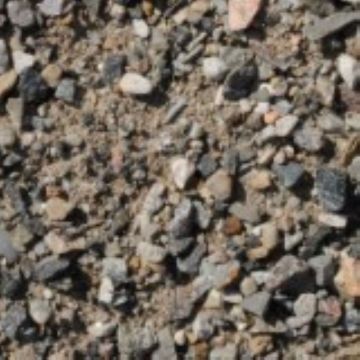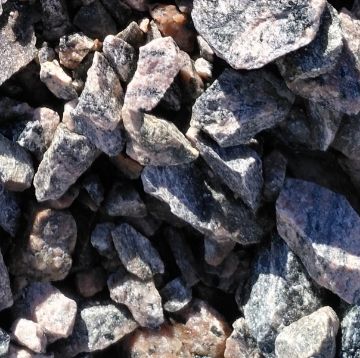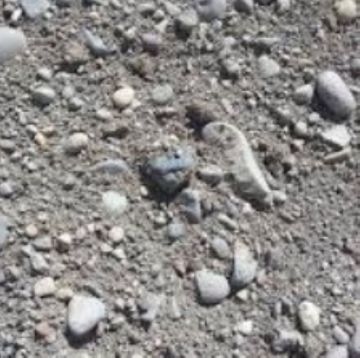Products
Some of the more common products available are listed below.
If you require something that is not listed, please contact us as we also have access to a variety of additional products from our suppliers.
Disclaimer: Due to differences in natural environment, location or processing, actual product may differ and pictures of product used on this site are for reference only.
Granular A
Crushed aggregates at 7/8" and smaller, mixed with quarried fines to allow for some compaction.
Also known as "A gravel", it is commonly used as a hard surface for the top coating of gravel roads, driveways, and parking lots.
It can also be used to make concrete (substitute for Granular M).
Granular M
Crushed gravel at 3/4" minus and mixed with quarried fines to allow for compaction. Used for cement mixing or for top coating for driveways and laneways.
Granular B Type II (2” MINUS)
Coarse crushed aggregates at 2” and smaller, mixed with quarried fines to allow for some compaction.
It is commonly used underneath Granular A as a base for the preparation of new roads, driveways, and parking lots.
6" Minus
Coarse crushed aggregate at 6" and smaller, mixed with quarried fines to allow for some compaction.
Commonly used as a base for new roads, driveways, and parking lots when additional support or deep fill is required.
1-1/4" Clear Stone
Crushed aggregate with very little to no quarried fines, screened to 1&1/4".
Commonly used for various drainage, but mostly to cover field beds.
It can also serve as a decoratice stone for pathways, flower beds, and foundations.
RipRap 6" Clear
Blasted and/or crushed crushed aggregate with no quarried fines, available in 6" or 12" rock .
Commonly used for erosion control, slope stabilization, and drainage.
Can also be used as cribbing fill.
Grey Crusher Fines
A form of rock chips from crushed aggrgate at 1/8" and smaller and mixed with quarried fines.
Commonly used to solidify interlocking or patio stones by placing underneath.
Can also be used for low weight traffic areas such as walkways and paths.
Oversized Rock Boulders Unsorted & Sorted
100% blasted rock with fines, sized betwen 18" - 30".
Commnly used as a fill for large/deep holes in new lands.
Can also be used in retaining walls, and barriers.
Ask us about sorted decorative boulders as a landscaping border or centerpiece!
Foundation Sand
One of the coarser sands we have on hand with particles of approximately 1/8” in size.
Commonly used for drainage, and backfilling around foundations or trenches.
Sand Fill
Natural sand excavated from the bank.
Commonly used as a filler in areas that typically get wet and require some drainage but is prone to shift.
Can also be used as mantle sand but you may have bigger rocks (6" and smaller) as it is not screened.
Filter Sand
Sand sized from .25 to 3.75 millimeters.
Commonly used in a field bed of a septic system to allow the wastewater to filer through the sand and be treated through a natural purification process.
Beach Sand
Screened Sand Fill to approximately 1/8" and smaller.
Commonly used in playgrounds and beach areas.
Modified Granular B (Packing)
Screened pit run mixed with crushed aggregate 2" and smaller, to improve compaction.
Commonly used as an economic means to provide structural stability to the base of new roads, driveways, and parking lots.
Pit Run
Sand and gravel excavated directly from an existing bank or deposit, with no processing.
Commonly used as a general fill and to level areas.
Granular B Type I (Screen Pit Run)
Sand and gravel as found in a natural pit-run gravel bank and screened to 2" and smaller.
Commonly used as a general fill and to level areas.
Can also be used as an economic base for the preperation of new driveways, and parking lots, or to backfill around a house.
Clay Fill
Loamy-clay fill excavated directly from the bank.
Commonly used to level out or fill in a hole within your property and can easily be compacted for a sturdier base.
Blended Garden Mix
A black soil mix composed of screened topsoil, horse manure, and peat moss.
Commonly used for flower and vegetable gardens.
Disclaimer: due to the mixing process , the environment and the screenings variety there is occasionally seed contamination in topsoil, compost etc.
Screened Topsoil
Screened sandy loam or sandy clay loam excavated from a bank.
Commonly used for lawn applications or flower beds.
Regrind Asphalt
Reprocessed pavement containing asphalt and aggregates.
Commonly used as an economic means in place of new asphalt in any project or roadway.





















